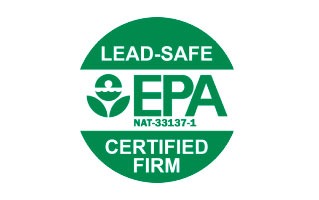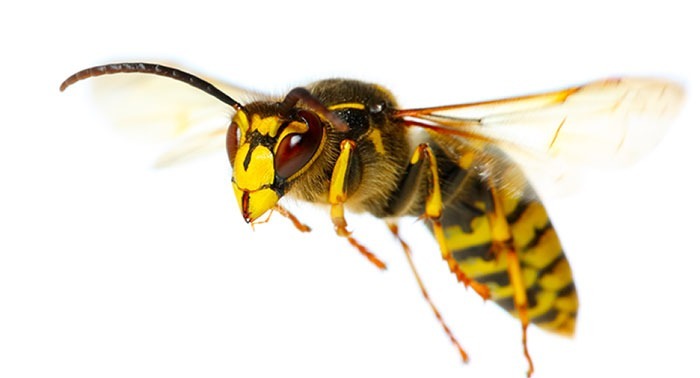
There are more than 30,000 species of wasps in the world. Of the 4,000 species of wasps in the United States, 50 of them can be found in Pennsylvania, with the most common being:
- Paper Wasps
- Eastern Yellow Jackets
- German Yellow Jackets
- Bald-faced Hornets
- European Hornets
Like bees, wasps have three components to their bodies: head, thorax and abdomen. They are larger than bees and they narrow where their thorax joins their abdomen.
Wasps are stinging insects and have the capacity to sting repeatedly.
Despite their intimidating appearance and aggressive nature when provoked, wasps perform a beneficial role in the earth’s ecosystem. In addition to being active pollinators, the various species of wasp prey on almost every pest insect – including caterpillars, earwigs and spiders – either for food for themselves or as a host for their larvae. Wasps have become a significant help to the agricultural community in protecting crops.
Wasps are either social or solitary insects. Wasps, Yellow Jackets and Hornets are all types of social wasps, becoming aggressive when provoked and sting. They will create a new colony each year to serve their queen, who has survived the winter.
Solitary wasps do not create colonies. They are generally not aggressive and except for the mud dauber, potter wasp and cicada killer these wasps do not sting.
All types of wasps build nests using chewed wood fibers which creates a papery pulp. The exception to this is the mud dauber wasp, whose nest is made of mud and clay.
Types of Wasps in Pennsylvania, New Jersey and Delaware
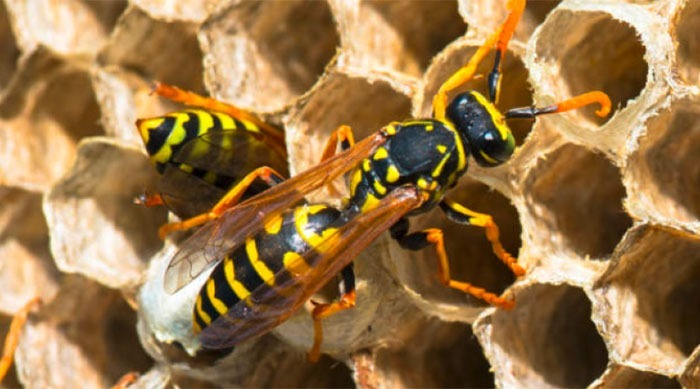
Paper Wasps
(Polistes species)
Paper wasps are one inch long with long legs that dangle when they fly. Their coloring can range from reddish-orange to black and can have yellow markings. They are sometimes called umbrella wasps because of the shape of their nests, which can be found on tree limbs, building eaves, in attics, garages, barns or suspended from window casings. Paper wasp colonies are smaller, having only up to 100 wasps.
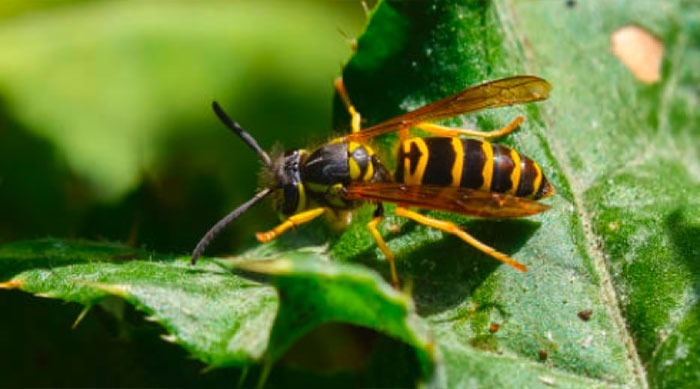
Eastern Yellow Jacket
(Vespula maculifrons)
Eastern yellow jackets are small, growing to only ½ inch long. They have black bodies with bright yellow stripes. Due to their size and markings they are often mistaken as honey bees. The difference being that yellow jackets have smooth bodies and longer wings. Yellow jackets prefer locating near human food sources, building their nests below ground near garbage containers or in dark, secluded spaces. They will also build nests in trees and shrubs. Their large colonies can have as many as 4,000 workers. Yellow jackets are aggressive and will pursue perceived threats.
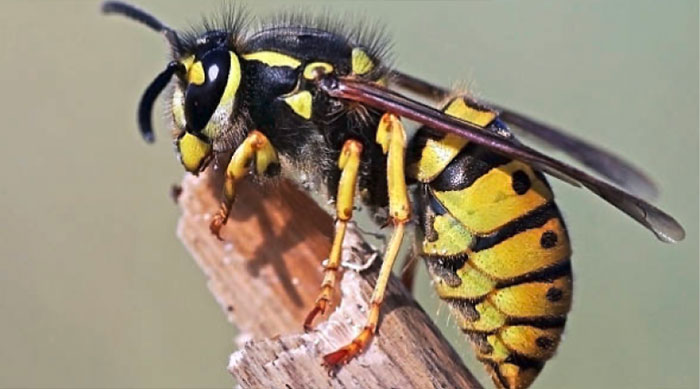
German Yellow Jackets
(Vespula germanica)
German yellow jackets also grow to only ½ inch in length. Their black and yellow coloring is distinguished by a small spade-shaped black mark on the abdomen with black spots along both sides. They will forage for food, feeding on found meat and sugary foods like beer, fruit, sweetened beverages and the honeydew of aphids. It prefers to nest in buildings or in the ground.
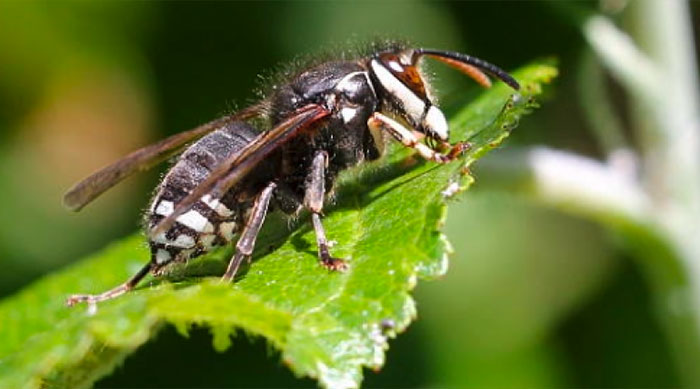
Bald-faced Hornets
(Dolichovespula maculata)
Bald-faced hornets have black bodies with gray bands and grow to ¾ inch in length. They have large white patches on their faces, which is how they came to be called “bald-faced”. Their nests can be found hanging from trees and buildings or inside bushes and on vegetation. Their colonies will have anywhere from 100 to 400 hornets. The bald-faced hornet feeds on soft-bodied insects like caterpillars and aphids as well as pollen and nectar from flowering plants. They will sting multiple times when provoked.
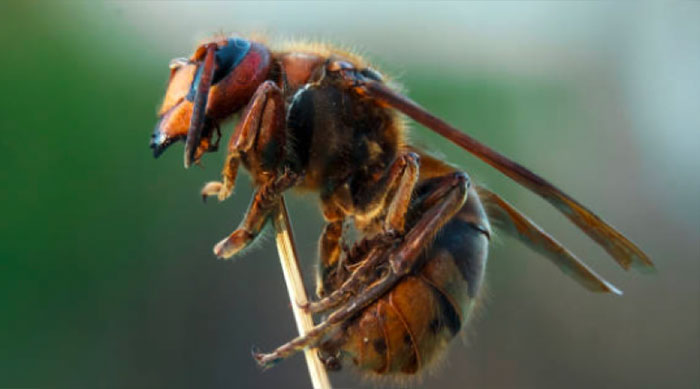
European Hornets
(Vespula crabro)
European hornets are larger than most other wasps, measuring up to 1-½ inches in length. They are brown with yellow stripes across their abdomen. They construct their nests in places where they can be hidden from view and not easily accessed by humans, like hollowed out trees, barns, within walls of houses and even in abandoned bee hives. They are social wasps and their colonies range from 300-500 hornets. European hornets prefer to hunt at night, preying on large insects like grasshoppers, butterflies and flies, even yellow jackets and honey bees. Their main diet consists of tree sap, honeydew and fruit. They are not aggressive but will sting when threatened.
Signs of an Infestation
Signs of a wasp infestation include:
- Wasp sightings: whether it’s just a few or a larger swarm
- You see a wasps nest near or attached to your home: some wasps will build their nests in aerial spaces like trees, eaves or attics while others will construct their nests underground
- Wood damage: you may notice holes or chewed wood – wasps use this to create their paper nests
- Buzzing sounds: consistent, loud buzzing sounds within your home indicate a possible infestation of bees and wasps
Because most wasps are aggressive when disturbed, schedule a visit with a pest control professional for an evaluation.
Health and Damage Considerations
Wasps can cause significant damage in their pursuit of food and materials to build their nests. They will strip the bark off trees to access sap to eat and use the bark to build their nests. Likewise, they will chew at the wood that provides structural support to your home.
Wasps make a positive contribution to the environment, feeding on the pests that are destructive to crops. If you think you have an infestation or you encounter wasps in nature be very careful not to provoke them or disturb their nests. Wasps have a painful sting, compounded by their ability to sting repeatedly. Their venom can be lethal to those who have an allergic reaction.
Behavior
Wasps are social or solitary. Social wasps will live in organized societies – colonies – with a queen, drones (males) and workers (females).
In solitary wasp communities, there is no queen but there is one female wasp who builds the nest. Solitary wasps will often build their nests near each other.
Wasps can be aggressive but in most cases only when they perceive a threat.
Habitat
A wasp will live in a paper nest in an aerial setting or a nest that is constructed underground.
Paper wasps and some yellow jackets and hornets make paper nests of hexagonal cones using wood fiber mixed with their saliva to create a pulpy substance.
Most solitary wasps and some yellow jackets and hornets make their nests in holes in the ground, choosing rotten wood or natural cavities. Some wasps even make mud nests.
Wasps will only use a nest one time. They will not repeat use of the same nest the following year but they may choose to return to the nest site if the conditions are favorable.
Lifecycle
The wasp lifecycle has four stages: egg, larva, pupa and adult, with colonies started by a single queen.
The wasp lifecycle begins each year at the end of winter when the queens emerge. The queen, fertilized prior to hibernation, builds a small nest and by summer begins laying eggs. Starting out small, the population will peak by the end of summer. They will abandon their colonies and nests in the fall and the fertilized female will seek a protected space to overwinter. Most wasps live for only a few months with the queen living up to one year.
Feeding
Adult wasps are omnivores, eating pollen and nectar as well as insects or spiders. Wasp larvae are carnivores, feeding on the chewed remnants of pests provided by the adult wasps.



